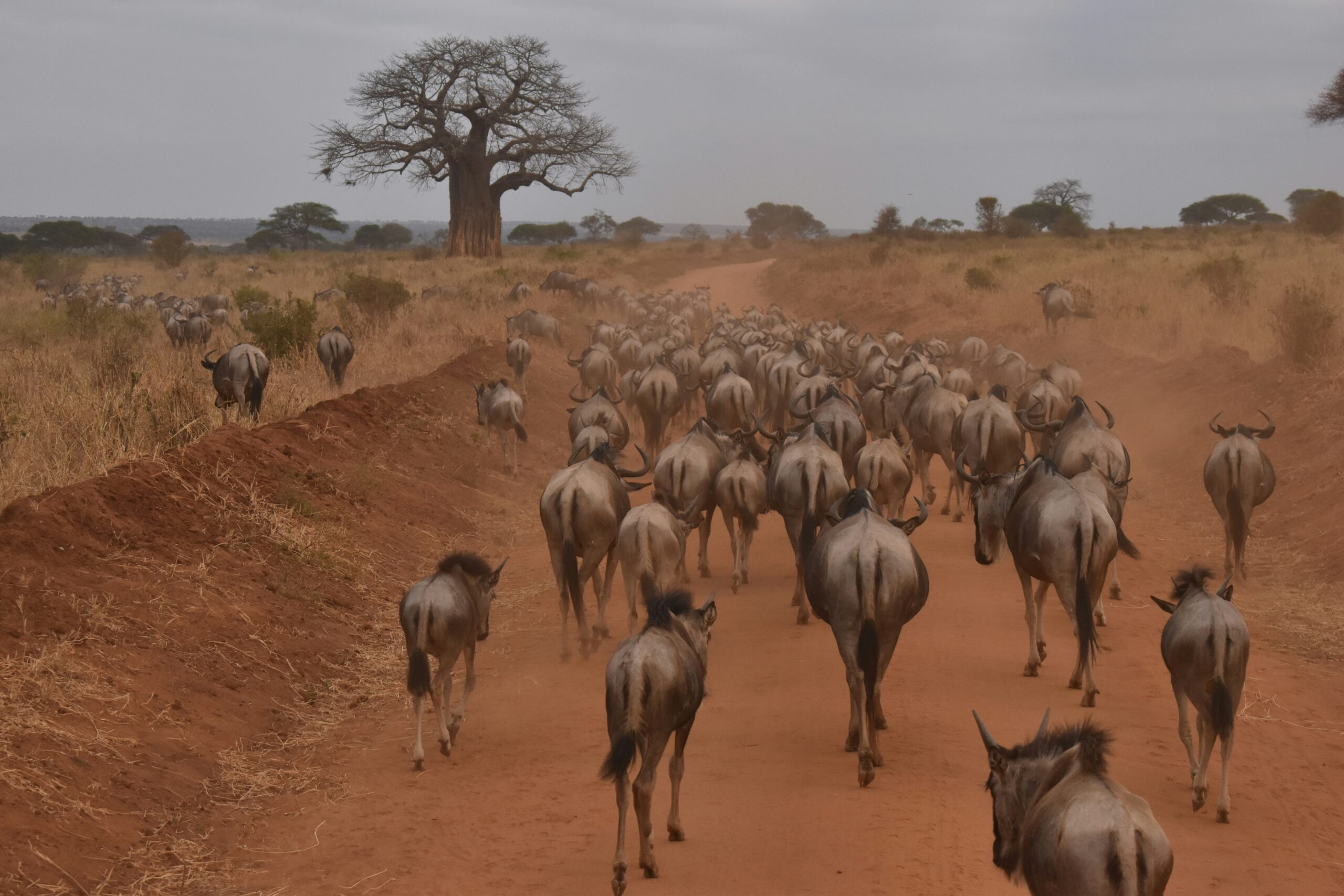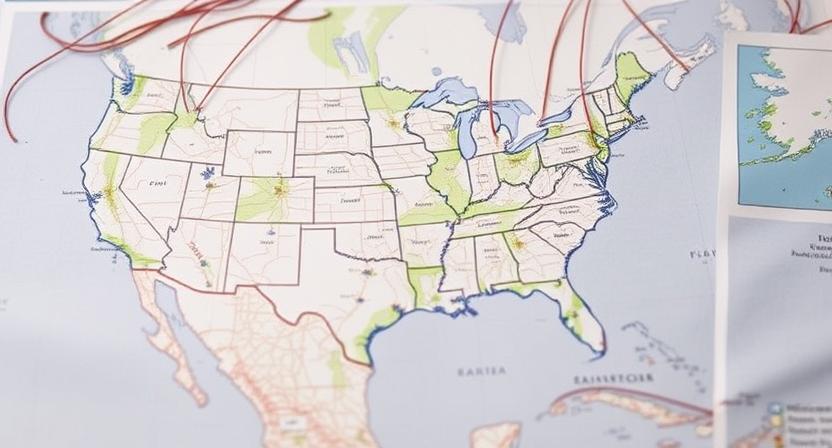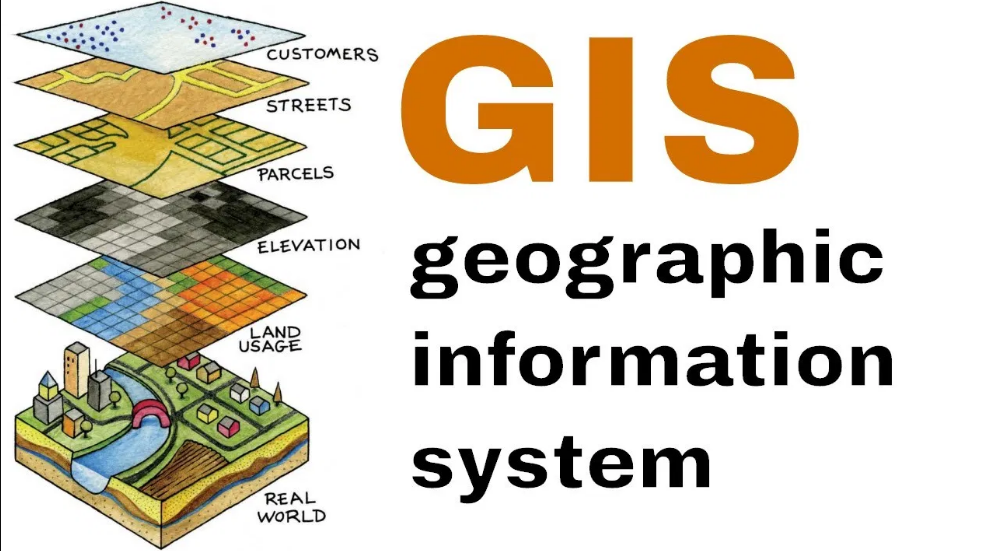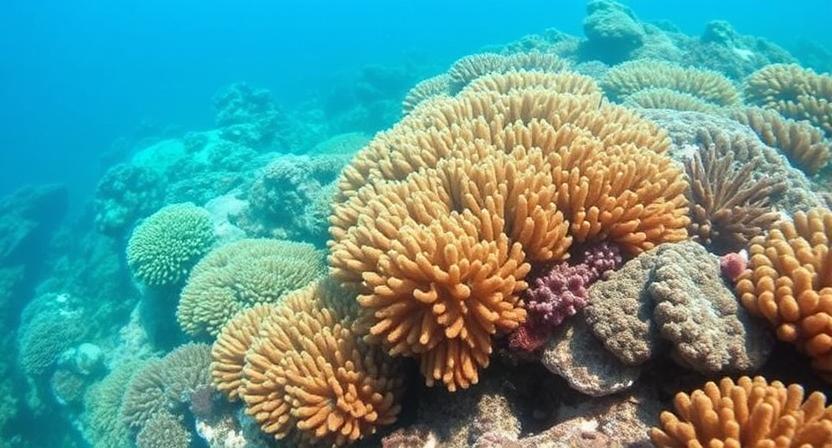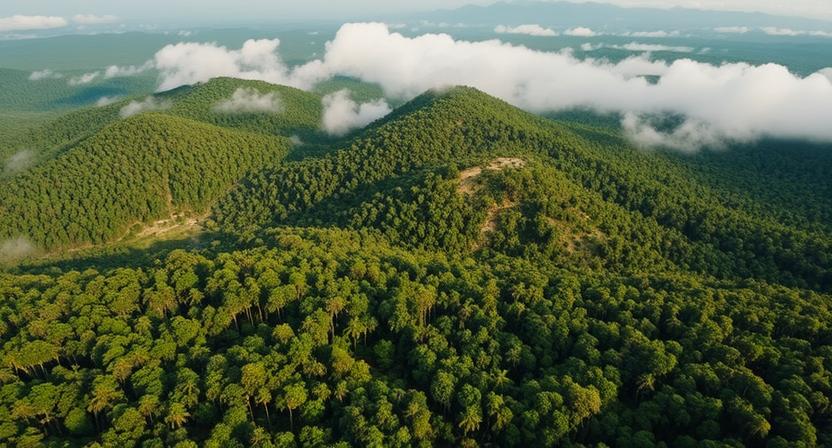
Causes of Deforestation

Deforestation is primarily driven by the expansion of agricultural activities, as vast areas of forests are cleared to make way for crops, livestock, and plantations. With the growing global demand for food, timber, and other commodities, forests are continuously being converted into agricultural land, leading to widespread deforestation. Additionally, logging for timber extraction and infrastructure development further contribute to the depletion of forest resources.
Moreover, the mining industry significantly impacts deforestation as companies clear large forested areas to access mineral deposits and resources. The construction of roads and the establishment of mining sites result in the fragmentation and destruction of critical forest habitats. Illegal logging activities also play a significant role in deforestation, as unregulated and unsustainable practices lead to the degradation of forest ecosystems.
• Expansion of agricultural activities
• Logging for timber extraction
• Infrastructure development
• Mining industry
• Illegal logging activities
Effects of Deforestation on Biodiversity
Deforestation poses a significant threat to biodiversity worldwide. As forests are cleared, the habitats of countless plant and animal species are destroyed, leading to a loss of biodiversity. This disruption in ecosystems can result in the endangerment and extinction of species that depend on forests for their survival.
Furthermore, deforestation can fragment and isolate populations, making it difficult for species to find mates and maintain genetic diversity. This genetic isolation can weaken populations, making them more vulnerable to diseases and environmental changes. Ultimately, the impact of deforestation on biodiversity can have far-reaching consequences for the delicate balance of our planet’s ecosystems.
• Deforestation leads to the destruction of habitats for countless plant and animal species
• Loss of biodiversity occurs as forests are cleared
• Endangerment and extinction of species that rely on forests for survival
• Fragmentation and isolation of populations make it hard for species to find mates
• Genetic isolation weakens populations, making them more vulnerable to diseases
Loss of Carbon Sequestration in Deforested Areas
Forests play a crucial role in absorbing and storing carbon dioxide from the atmosphere, thus helping to mitigate the impacts of climate change. When forests are cleared through deforestation, the carbon stored in trees and plants is released back into the atmosphere in the form of carbon dioxide. This loss of carbon sequestration in deforested areas contributes significantly to the increase in greenhouse gas emissions, exacerbating the effects of global warming and climate change. The scale of carbon emissions resulting from deforestation poses a serious threat to the delicate balance of the Earth’s atmosphere and accelerates the rate of climate change, highlighting the critical importance of preserving and restoring forests for carbon sequestration.
In addition to the direct release of carbon stored in trees, the loss of carbon sequestration in deforested areas also impacts the capacity of remaining ecosystems to absorb carbon dioxide. With fewer trees and vegetation to uptake carbon dioxide, the overall ability of the landscape to act as a carbon sink is compromised, further amplifying the challenges posed by rising greenhouse gas levels. This disruption in the natural carbon cycle not only contributes to climate change but also underscores the interconnectedness of ecosystems and the far-reaching consequences of deforestation on global carbon dynamics. Efforts to address the loss of carbon sequestration in deforested areas must be prioritized to mitigate the impacts of deforestation on climate change and promote sustainable land management practices.
• Forests play a crucial role in absorbing and storing carbon dioxide from the atmosphere
• Deforestation leads to the release of stored carbon back into the atmosphere as carbon dioxide
• Loss of carbon sequestration in deforested areas contributes to increased greenhouse gas emissions
• This exacerbates the effects of global warming and climate change
• Preserving and restoring forests is critical for carbon sequestration
• The loss of carbon sequestration also impacts remaining ecosystems’ capacity to absorb CO2
• With fewer trees, landscapes struggle to act as effective carbon sinks
• Disruption in the natural carbon cycle worsens climate change challenges
• Deforestation has far-reaching consequences on global carbon dynamics
• Efforts must be made to address this loss through sustainable land management practices.
Impact of Deforestation on Soil Erosion
Deforestation significantly exacerbates soil erosion, as trees play a crucial role in holding the soil together with their roots. When forests are cleared, the soil becomes vulnerable to erosion by wind and water. Without the protection of tree roots, the topsoil can easily wash away during heavy rainfall or be blown away by strong winds, leading to land degradation and reduced soil fertility. As a result, deforested areas are more prone to experiencing extensive erosion, which can have long-lasting consequences on the landscape and ecosystem.
Soil erosion caused by deforestation not only depletes the quality of the soil but also affects water systems and aquatic habitats downstream. Sediment runoff from eroded soil can clog rivers and streams, leading to reduced water quality and disrupting aquatic ecosystems. Additionally, the loss of fertile topsoil due to erosion can hinder agricultural productivity in deforested regions, further exacerbating food insecurity and economic challenges for local communities. The impact of soil erosion resulting from deforestation underscores the importance of preserving forests to maintain soil health and ensure the sustainability of ecosystems.
• Deforestation weakens soil structure by removing trees that help hold soil in place
• Vulnerability to erosion increases with loss of tree roots protecting topsoil
• Heavy rainfall and strong winds can easily wash away or blow off topsoil in deforested areas
• Land degradation and reduced soil fertility are consequences of extensive erosion caused by deforestation
Soil erosion due to deforestation not only affects the quality of the soil but also has negative impacts on water systems and aquatic habitats downstream.
Sediment runoff from eroded soil can lead to clogged rivers and streams, disrupting aquatic ecosystems.
Loss of fertile topsoil hinders agricultural productivity, exacerbating food insecurity and economic challenges for local communities.
Preserving forests is crucial to maintaining soil health and ensuring ecosystem sustainability.
Disruption of Water Cycles due to Deforestation
When forests are cleared for various purposes such as agriculture, urban development, or logging, one significant consequence is the disruption of water cycles in the affected regions. Trees play a crucial role in regulating the water cycle by absorbing water from the soil through their roots and releasing it into the atmosphere through a process known as transpiration. As a result, deforestation can lead to decreased transpiration rates, reducing the amount of water vapor entering the atmosphere and affecting precipitation patterns.
Moreover, deforestation can also increase the risk of flooding and droughts in the surrounding areas. Without the presence of trees to absorb excess rainfall and regulate water flow, the likelihood of flooding is heightened. Conversely, during dry periods, deforested areas are more susceptible to drought as the lack of tree cover leads to increased evaporation rates and decreased groundwater recharge. This disruption of water cycles not only impacts the local ecosystem but can also have far-reaching consequences on the livelihoods of communities dependent on reliable water sources.
• Deforestation disrupts water cycles by reducing transpiration rates
• Trees play a crucial role in regulating the water cycle
• Decreased transpiration leads to less water vapor entering the atmosphere
• This disruption affects precipitation patterns
• Deforestation increases the risk of flooding and droughts
• Without trees, excess rainfall is not absorbed leading to flooding
• Lack of tree cover during dry periods causes increased evaporation and decreased groundwater recharge
• Disruption of water cycles impacts local ecosystems and communities reliant on water sources
Contribution of Deforestation to Greenhouse Gas Emissions

Deforestation is a significant contributor to greenhouse gas emissions, particularly through the release of carbon dioxide into the atmosphere. When trees are cut down or burned, the carbon stored in them is released, adding to the overall concentration of greenhouse gases in the atmosphere. This process not only diminishes the capacity of forests to sequester carbon but also directly contributes to the warming of the planet.
The impact of deforestation on greenhouse gas emissions is further exacerbated by the loss of biodiversity and the disruption of ecosystems. As forests are cleared, the natural balance that helps regulate carbon cycles is disturbed, leading to a more pronounced effect on the Earth’s climate system. It is crucial to recognize the intricate relationship between deforestation and greenhouse gas emissions to develop effective strategies for mitigating climate change and preserving our planet’s health.
• Deforestation releases carbon dioxide into the atmosphere
• Diminishes forests’ ability to sequester carbon
• Contributes to the warming of the planet
• Loss of biodiversity and disruption of ecosystems worsen impact on climate system
• Recognizing relationship is crucial for developing effective strategies for mitigating climate change
Deforestation’s Role in Climate Change
Deforestation plays a crucial role in contributing to climate change. When trees are cut down, the stored carbon dioxide within them is released back into the atmosphere, adding to the greenhouse gas emissions that trap heat and contribute to global warming. This process not only reduces the Earth’s ability to naturally absorb carbon dioxide but also leads to the depletion of vital carbon sinks that help regulate the planet’s climate.
Additionally, deforestation can disrupt local and regional weather patterns, leading to more frequent and severe droughts, floods, and other extreme weather events. The removal of trees also diminishes the Earth’s capacity to produce oxygen and filter pollutants from the air, further exacerbating the impacts of climate change. Overall, the link between deforestation and climate change underscores the urgent need for comprehensive measures to protect and restore our forests for the well-being of our planet and future generations.
• Deforestation releases stored carbon dioxide into the atmosphere, contributing to greenhouse gas emissions
• Depletion of vital carbon sinks reduces Earth’s ability to naturally absorb carbon dioxide
• Disruption of local and regional weather patterns can lead to more frequent and severe droughts, floods, and extreme weather events
• Removal of trees diminishes Earth’s capacity to produce oxygen and filter pollutants from the air
Connection between Deforestation and Extreme Weather Events
Deforestation can directly contribute to the occurrence of extreme weather events such as hurricanes, floods, and droughts. When forests are cleared, the land becomes more vulnerable to erosion and flooding, as trees previously provided a natural barrier to absorb water and stabilize the soil. The removal of trees also disrupts local weather patterns, leading to changes in precipitation levels and increased risk of severe storms in deforested areas.
Furthermore, deforestation can exacerbate the impacts of climate change, which in turn can lead to more frequent and intense extreme weather events. Forests play a crucial role in regulating the Earth’s climate by absorbing carbon dioxide from the atmosphere. With fewer trees to capture greenhouse gases, the concentration of these gases increases, contributing to global warming and the destabilization of weather patterns. As a result, deforestation not only directly influences local weather conditions but also indirectly fuels the broader climate crisis, amplifying the likelihood of extreme weather events worldwide.
• Deforestation can lead to increased vulnerability to erosion and flooding
• Removal of trees disrupts local weather patterns, affecting precipitation levels
• Lack of trees to absorb carbon dioxide contributes to global warming
• Global warming leads to more frequent and intense extreme weather events
Deforestation’s Impact on Indigenous Communities
Deforestation often has severe repercussions on indigenous communities around the world. As vast tracts of forests are cleared for agricultural or industrial purposes, the traditional lands and resources of indigenous peoples are frequently encroached upon or destroyed. This disruption can lead to the displacement of indigenous communities, causing a loss of cultural identity and connection to the land that has sustained them for generations.
Furthermore, deforestation can result in the degradation of critical natural resources that indigenous communities rely on for their survival. The loss of forest cover can impact water sources, disrupt wildlife habitats, and reduce biodiversity, diminishing the availability of food, medicine, and materials essential for indigenous communities’ livelihoods. This environmental upheaval can undermine the social and economic stability of these communities, exacerbating existing vulnerabilities and perpetuating cycles of poverty and marginalization.
• Deforestation often leads to the displacement of indigenous communities
• Loss of cultural identity and connection to traditional lands
• Degradation of critical natural resources essential for survival
– Impact on water sources
– Disruption of wildlife habitats
– Reduction in biodiversity
• Diminished availability of food, medicine, and materials necessary for livelihoods
• Environmental upheaval can undermine social and economic stability
– Exacerbating existing vulnerabilities
– Perpetuating cycles of poverty and marginalization
Economic Implications of Deforestation
Deforestation has significant economic implications that can impact both local communities and global markets. The loss of forests leads to reduced biodiversity, diminishing natural resources, and disruption of ecosystem services, all of which can have negative effects on various industries. Industries like agriculture, logging, and tourism that rely on forests for resources and services may face challenges and decreased profitability due to deforestation. Additionally, deforestation can result in increased costs for water treatment, flood control, and climate regulation, placing a financial burden on governments and taxpayers.
On a larger scale, deforestation contributes to global economic instability by affecting agricultural productivity, driving up food prices, and increasing the occurrence of natural disasters such as floods and droughts. The depletion of natural resources, including timber, medicinal plants, and genetic materials, can result in lost economic opportunities for industries involved in biotechnology, pharmaceuticals, and eco-tourism. Furthermore, the economic costs of deforestation extend beyond immediate financial losses, as the long-term consequences of environmental degradation can lead to reduced economic growth, social unrest, and increased poverty in affected regions.
• Deforestation leads to reduced biodiversity, diminishing natural resources, and disruption of ecosystem services
• Industries like agriculture, logging, and tourism may face challenges and decreased profitability due to deforestation
• Increased costs for water treatment, flood control, and climate regulation place a financial burden on governments and taxpayers
• Deforestation affects global economic instability by driving up food prices and increasing natural disasters
• Depletion of natural resources results in lost economic opportunities for industries involved in biotechnology, pharmaceuticals, and eco-tourism
Government Policies and Deforestation Rates

Government policies play a crucial role in determining the rate of deforestation within a country. Policies that prioritize sustainable land management and conservation efforts can effectively curb deforestation rates. On the other hand, policies that incentivize logging, agriculture expansion, or other activities that lead to deforestation can exacerbate the problem and accelerate the loss of valuable forests.
By implementing strict regulations, enforcing existing forest protection laws, and promoting reforestation initiatives, governments can significantly impact the rates of deforestation within their borders. Additionally, fostering partnerships with local communities, businesses, and international organizations can create a collaborative effort to combat deforestation and preserve vital forest ecosystems. Strong government leadership and proactive policies are essential in addressing the complex issue of deforestation and mitigating its adverse effects on biodiversity, climate stability, and indigenous communities.
• Government policies are crucial in determining deforestation rates
• Policies prioritizing sustainable land management can curb deforestation
• Policies incentivizing logging and agriculture expansion accelerate deforestation
• Strict regulations, enforcement of forest protection laws, and reforestation initiatives are key
measures to combat deforestation
• Partnerships with local communities, businesses, and international organizations can aid in
preserving vital forest ecosystems
• Strong government leadership is essential in addressing the issue of deforestation
Role of Agriculture in Driving Deforestation
Agriculture plays a significant role in driving deforestation worldwide. As the global demand for agricultural products continues to rise, more land is cleared to make way for farming activities. This expansion often leads to the destruction of forests, as trees are cut down to create space for crops or livestock. In many cases, the lure of profits from agricultural ventures outweighs concerns for environmental conservation, driving the ongoing cycle of deforestation.
Large-scale commercial agriculture, such as soybean and palm oil plantations, is a major driver of deforestation in many regions. These industries often prioritize maximizing yields and profits, leading to extensive clearing of forests to make room for monoculture crops. Additionally, small-scale subsistence agriculture also contributes to deforestation as local communities expand their agricultural land to meet their basic food needs. The combined impact of various agricultural activities underscores the importance of sustainable farming practices and land use management to mitigate the negative effects of deforestation on our planet.
• Large-scale commercial agriculture, such as soybean and palm oil plantations, is a major driver of deforestation
• These industries prioritize maximizing yields and profits, leading to extensive clearing of forests for monoculture crops
• Small-scale subsistence agriculture also contributes to deforestation as local communities expand agricultural land for basic food needs
• Sustainable farming practices and land use management are crucial in mitigating the negative effects of deforestation on our planet
Importance of Forest Conservation for Global Climate Stability
Forests play a crucial role in maintaining the Earth’s climate stability. With their ability to absorb and store large amounts of carbon dioxide, forests act as carbon sinks, helping to reduce the concentration of greenhouse gases in the atmosphere. Additionally, trees release oxygen through photosynthesis, which is vital for human and animal survival. By conserving forests, we can actively contribute to mitigating the impact of climate change and safeguarding the health of our planet.
Furthermore, forests provide essential ecosystem services that regulate local and global climate patterns. Trees help to retain water in the soil, reducing the risk of droughts and flooding in surrounding areas. Forests also influence cloud formation and rainfall patterns, playing a key role in maintaining balanced water cycles. Additionally, the preservation of forests supports biodiversity, as many species rely on these habitats for their survival. Through forest conservation efforts, we can protect fragile ecosystems and ensure the long-term stability of our climate.
• Forests act as carbon sinks, absorbing and storing large amounts of carbon dioxide
• Trees release oxygen through photosynthesis, vital for human and animal survival
• Conservation of forests helps mitigate the impact of climate change
• Forests regulate local and global climate patterns by retaining water in the soil
• Preservation of forests supports biodiversity by providing habitats for many species
Technological Solutions to Monitor and Combat Deforestation
In the constant battle against deforestation, technological solutions have emerged as powerful tools to monitor and combat this global issue. Satellite imaging and remote sensing technologies play a crucial role in tracking changes in forest cover over time. These advanced tools provide real-time data on deforestation rates, allowing for timely intervention and management strategies to be implemented.
Moreover, the development of artificial intelligence and machine learning algorithms has further enhanced the efficiency of monitoring efforts. By analyzing vast amounts of data, these technologies can pinpoint areas at high risk of deforestation and help prioritize conservation actions. Additionally, drones equipped with high-resolution cameras are utilized to conduct aerial surveys, enabling detailed monitoring of remote and inaccessible forest areas. By harnessing the power of technology, we are better equipped to address the challenges posed by deforestation and work towards sustainable land use practices.
• Satellite imaging and remote sensing technologies track changes in forest cover over time
• Provide real-time data on deforestation rates for timely intervention
• Artificial intelligence and machine learning algorithms analyze data to pinpoint high-risk areas
• Help prioritize conservation actions for effective management strategies
• Drones with high-resolution cameras conduct aerial surveys of remote forest areas
Community-Based Initiatives to Prevent Deforestation
Community-based initiatives to prevent deforestation play a crucial role in empowering local communities to protect their natural resources. By engaging residents in conservation efforts, these initiatives foster a sense of ownership and responsibility for the forests in their surroundings. Through education, training, and sustainable practices, community members are encouraged to actively participate in preserving the biodiversity and ecosystem services provided by forests.
These grassroots initiatives often involve partnerships between communities, non-profit organizations, and government agencies to implement effective strategies for forest conservation. By promoting sustainable land use practices, such as agroforestry and reforestation, community-based projects can help mitigate the drivers of deforestation while enhancing local livelihoods. Through collective action and community empowerment, these initiatives not only safeguard forests but also contribute to broader efforts to combat climate change and preserve the planet’s ecological balance.
• Community-based initiatives empower local communities to protect natural resources
• Engagement in conservation efforts fosters ownership and responsibility for surrounding forests
• Education, training, and sustainable practices encourage active participation in biodiversity preservation
• Partnerships between communities, non-profits, and government agencies are key to effective forest conservation strategies
• Sustainable land use practices like agroforestry and reforestation help mitigate deforestation drivers
• Collective action and community empowerment contribute to combating climate change and preserving ecological balance.
International Efforts to Combat Deforestation
International efforts to combat deforestation have gained momentum in recent years, with countries coming together to address the urgent need for forest conservation. Various initiatives, such as the REDD+ program and the Bonn Challenge, aim to reduce deforestation rates and promote sustainable land management practices. By working collaboratively on a global scale, countries are striving to protect vital forest ecosystems and mitigate the negative impacts of deforestation on biodiversity and climate change.
Additionally, international organizations and partnerships, like the United Nations’ REDD Programme and the World Bank’s Forest Carbon Partnership Facility, play a crucial role in providing funding and technical assistance to support reforestation and afforestation projects. These initiatives not only help to address deforestation but also promote the sustainable use of forest resources, contributing to the overall well-being of ecosystems and communities worldwide. Through shared responsibility and coordinated action, the international community is making significant strides in combating the destructive effects of deforestation and working towards a more sustainable future for our planet.
• The REDD+ program and the Bonn Challenge are key initiatives in reducing deforestation rates
• International organizations like the United Nations’ REDD Programme provide funding and technical assistance for reforestation projects
• Collaborative global efforts aim to protect vital forest ecosystems and mitigate negative impacts on biodiversity and climate change
• Sustainable land management practices are promoted through international partnerships such as the World Bank’s Forest Carbon Partnership Facility.
Forestry Practices to Promote Sustainable Land Use

Sustainable forestry practices play a crucial role in ensuring the long-term health and vitality of our forests. By implementing techniques such as selective logging, agroforestry, and reforestation, we can minimize the negative impacts of deforestation while still meeting our resource needs. These practices help maintain the biodiversity of the ecosystem, protect watersheds, and contribute to carbon sequestration, ultimately supporting a more sustainable relationship between humans and the environment.
Additionally, promoting sustainable land use in forestry can also lead to economic benefits for local communities. By adopting responsible harvesting methods and prioritizing conservation, we can create jobs in the forestry sector while also preserving the valuable ecosystem services that forests provide. Through partnerships with local stakeholders, governments, and NGOs, we can work together to protect our forests for future generations while supporting the well-being of both people and the planet.
• Selective logging, agroforestry, and reforestation techniques help minimize negative impacts of deforestation
• Maintain biodiversity of ecosystem and protect watersheds
• Contribute to carbon sequestration for a more sustainable environment
• Economic benefits for local communities through responsible harvesting methods
• Creation of jobs in the forestry sector while preserving valuable ecosystem services
• Partnerships with local stakeholders, governments, and NGOs to protect forests for future generations
Deforestation’s Link to Loss of Habitats for Endangered Species
Deforestation poses a significant threat to endangered species by directly leading to the loss of their habitats. As forests are cleared for agricultural expansion, logging, or infrastructure development, many species lose their homes and struggle to find suitable environments to survive. The destruction of these habitats disrupts the delicate balance of ecosystems, pushing endangered species closer to the brink of extinction. Without the protection of their natural habitats, these vulnerable animals are forced to adapt to new and often unsuitable environments, further jeopardizing their chances of survival.
In addition to habitat loss, deforestation also isolates populations of endangered species, making it difficult for them to interact and reproduce effectively. Fragmenting habitats through deforestation can lead to genetic isolation within species, reducing genetic diversity and resilience to environmental changes. This fragmentation can also result in smaller, isolated populations that are more susceptible to threats such as diseases, predators, and natural disasters. Thus, the link between deforestation and the loss of habitats for endangered species is a critical issue that demands urgent attention and conservation efforts to safeguard biodiversity.
• Deforestation directly leads to loss of habitats for endangered species
• Forests cleared for agricultural expansion, logging, or infrastructure development
• Endangered species struggle to find suitable environments to survive
• Destruction of habitats disrupts ecosystems’ balance, pushing species closer to extinction
• Deforestation isolates populations of endangered species
• Makes it difficult for them to interact and reproduce effectively
• Fragmenting habitats leads to genetic isolation within species
• Reduces genetic diversity and resilience to environmental changes
The critical issue of deforestation’s link to the loss of habitats for endangered species demands urgent attention and conservation efforts. It is essential to address this issue in order to safeguard biodiversity and protect vulnerable animal populations from further decline.
Educational Campaigns to Raise Awareness about Deforestation
Educational campaigns play a crucial role in raising awareness about the devastating impacts of deforestation on our planet. By educating the public about the importance of forests and the consequences of their destruction, these initiatives aim to foster a sense of responsibility and inspire action towards forest conservation. Through various means such as workshops, school programs, social media campaigns, and community events, these educational efforts aim to reach a wide audience and drive home the urgent need to protect our forests.
By increasing knowledge and understanding about deforestation, educational campaigns empower individuals to make informed choices that can contribute to the preservation of our planet’s valuable natural resources. These initiatives not only highlight the environmental significance of forests but also shed light on the interconnectedness between deforestation and issues such as climate change, biodiversity loss, and sustainable development. By engaging with the public and promoting a sense of stewardship towards the environment, educational campaigns have the potential to mobilize communities towards collective action in safeguarding our forests for future generations.
• Educational campaigns use workshops, school programs, social media, and community events to reach a wide audience
• Increasing knowledge and understanding empowers individuals to make informed choices for forest conservation
• Highlighting the interconnectedness between deforestation, climate change, biodiversity loss, and sustainable development
• Promoting a sense of stewardship towards the environment to mobilize communities for collective action
The Future of Global Climate with Continued Deforestation
Scientists predict that if deforestation continues at its current rate, the future of the global climate is bleak. As trees are cleared from vast areas of land, the Earth loses its natural ability to absorb carbon dioxide through the process of photosynthesis. This leads to an increase in greenhouse gas emissions, exacerbating the effects of climate change. Rising temperatures, unstable weather patterns, and more frequent extreme weather events are all likely outcomes of unchecked deforestation.
Furthermore, the loss of forests contributes to the disruption of ecosystems and biodiversity, impacting the delicate balance that supports life on Earth. With habitats destroyed and species driven to extinction, the global climate faces further strain as natural processes are disrupted. Continued deforestation not only poses a threat to the environment but also to humanity, as it jeopardizes the stability and sustainability of our planet’s climate system.
• The Earth loses its natural ability to absorb carbon dioxide through photosynthesis
• Increase in greenhouse gas emissions exacerbating climate change effects
• Rising temperatures, unstable weather patterns, and more frequent extreme weather events likely outcomes of unchecked deforestation
• Disruption of ecosystems and biodiversity with loss of forests
• Impact on delicate balance supporting life on Earth
• Threat to environment and humanity’s stability and sustainability

